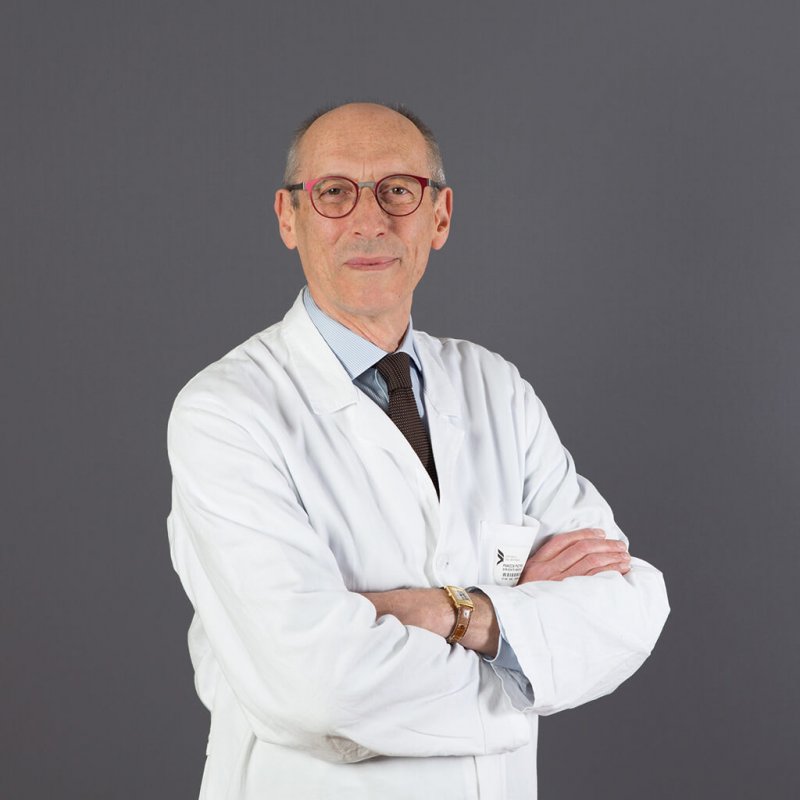Tomosynthesis or 3D-like mammography: what is it and why is it better than 2D?

出版日期: 29-01-2024
更新日期: 29-01-2024
主题: Radiology
预计阅读时间: 1 分钟
Mammography is the key exam for the diagnosis of breast cancer: the cancer with the highest estimated incidence in the global population (55,700 new diagnoses in Italy alone in 2022, which is 0.5% higher than in 2020).
However, according to the American Cancer Society, the 5-year survival from localized, noninvasive stage diagnosis is 99%, which proves the integral role of periodic breast screening and checkups, performed with modern technologies.
Dr. Pietro Panizza, a breast radiologist at Casa di Cura La Madonnina and Chief of the Breast Imaging Department at IRCCS Ospedale San Raffaele, explains what is the 3D-like mammography or tomosynthesis, which is already available at Casa di Cura La Madonnina.
What is 3D-like mammography or tomosynthesis?
"Tomosynthesis or Digital Breast Tomosynthesis (DBT)," the Doctor explains, "is an evolution of mammography with 2D technology. The tomosynthesis apparatus is identical to the 2D mammographer and similarly involves compression of the breast; however, thanks to an oscillating movement of the X-ray tube (which produces X-rays), tomosynthesis allows images to be acquired from different angles."
In this way, 3D-like breast images with volumetric acquisition and processing of numerous thin organ sections are obtained.
Advantages
The advantages of 3D-like mammography or tomosynthesis, compared with the traditional 2D technique, are the following:
- reduction of the overlap of glandular tissues images, an effect that in 2D mammography may prevent a lesion from being visualized;
- timely elimination of the images overlap that may show a lesion that does not exist;
- reduction of false-negative and false-positive cases;
- reduction of the number of in-depth mammography examinations with additional radiographs or ultrasound.
In fact, some studies have shown:
- increase in the rate of tumor identification;
- reduction in the number of false-positive cases.
How long does the examination last and what does the patient need to know?
The duration of the examination is the same as the one of 2D mammography.
No special preparation procedures are required, but applying creams and deodorants to the breast area should be avoided on the day of the examination.
Risks
Mammography with tomosynthesis does not have any particular risks other than exposure to a low dose of ionizing radiation. These doses are much lower than those established by ICRP (International Commission on Radiological Protection) and considered safe because the risk-benefit ratio clearly favors the benefit associated with early detection.
Breast diagnostics in Madonnina
Casa di Cura La Madonnina has recently upgraded the breast diagnostic area by acquiring a mammographer with tomosynthesis, and an ultrasound scanner with dedicated probes for breast study.
"These technologies facilitate accurate and timely breast diagnoses. By investing in state-of-the-art equipment, the clinic initiates a process of modernizing diagnostic technologies, improving operational efficiency and the diagnostic process," the doctor specifies.
Breast checks to be performed
Regular checkups are crucial in the fight against breast cancer as they allow to detect it at an early stage. For this reason, it is reccomended:
- to perform self-examination, preferbly on the first days of the cycle;
- for asymptomatic women under the age of 40 with no familial risk: to perform ultrasonography, with no defined frequency. Usually the gynecologist, breast specialist or family physician requests it when the clinical examination shows alterations or the assessment of the breast is complex;
- for all women of the age from 40 to 49: to perform mammography once a year;
- for all women from the age of 50: to perform mammography every 1-2 years.
In case of palpable changes, ultrasonography is the most appropriate examination. In case of doubtful/suspicious images or dense sense at mammography, the Radiology Physician decides whether to complement it with ultrasonography.
Risk factors for breast cancer
When it comes to the risk of developing breast cancer, it's important to acknowledge factors we have some control over and those that are beyond our influence.
Non-modifiable risk factors include:
- female gender;
- age: the probability of breast cancer increases with age;
- familiarity: the presence of 1 or 2 breast cancers in 1st and 2nd degree relatives;
- heredity: about 10% of breast cancers are due to genetic mutation, which provokes a much higher risk of getting breast cancer than in the non-mutated population. The mutation is suspected when at least 3 family members have breast cancer;
- dense breast: increases the risk of developing the cancer up to 6 times.
Modifiable risk factors, on the other hand, include:
- smoking and alcohol abuse;
- use of female hormones;
- overweight and obesity;
- unbalanced and high-fat diet;
- sedentary lifestyle.

